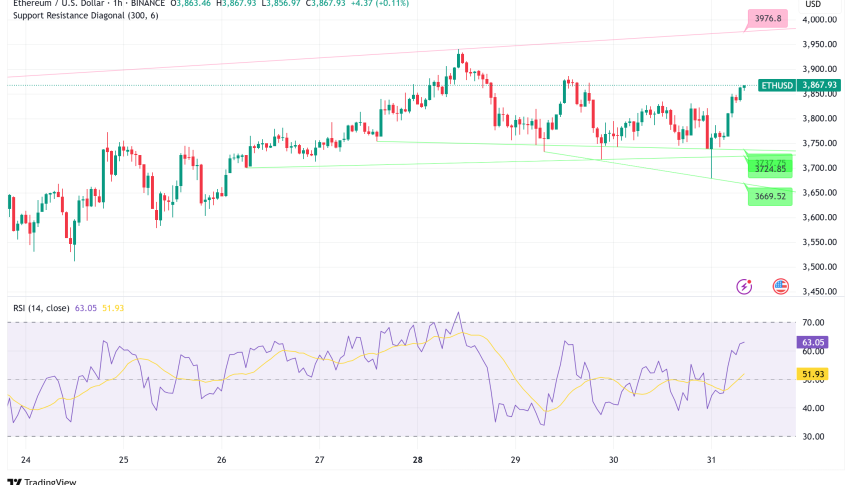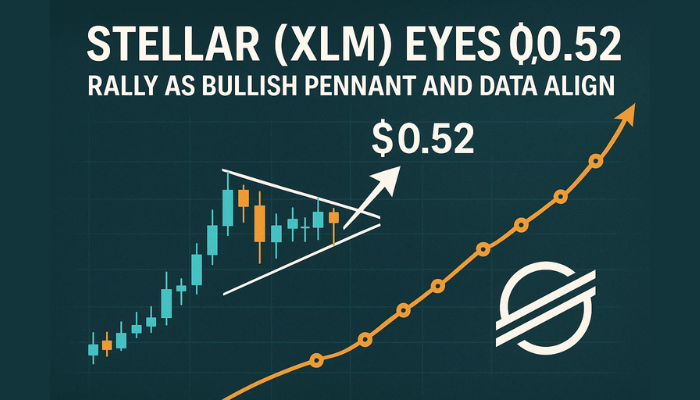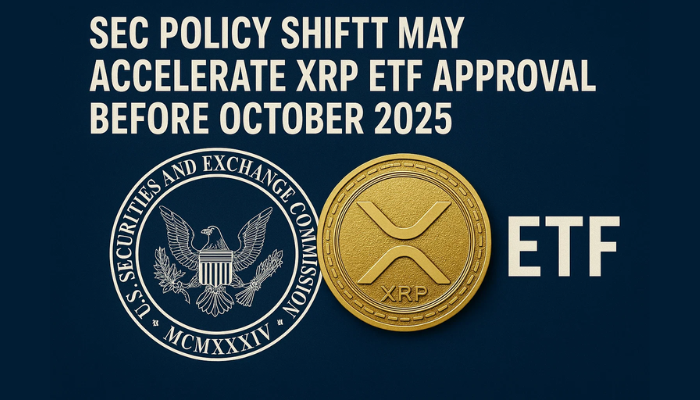Ethereum’s Institutional Surge: Staking ETF Acknowledged, But Short-Term Caution Persists
Ethereum keeps showing how strong it is by staying above the important $3,800 support level while institutional adoption speeds up at an

Quick overview
- Ethereum remains strong above the $3,800 support level, signaling increased institutional adoption.
- Innovative equity-wrapper structures have made ETH more appealing to traditional investors by simplifying its value proposition.
- BlackRock's approval for staking in its Ethereum Trust marks a significant shift in institutional engagement with the network.
- Technical analysis suggests a potential rise to $4,500, but caution is advised due to bearish divergences and resistance levels.
Ethereum ETH/USD keeps showing how strong it is by staying above the important $3,800 support level while institutional adoption speeds up at an unprecedented rate. The second-largest cryptocurrency in the world by market capitalization is going through a major change as big names in traditional banking start to see ETH as more than just an investment vehicle, but as the foundation for the future of digital money.

Treasury Companies Solve Ethereum’s Institutional Narrative Challenge
Bitwise Chief Investment Officer Matt Hougan said that “solving Ethereum’s narrative problem” has led to a big step forward in institutional adoption. Innovative “equity-wrapper” structures have solved the problem that made it hard for institutions to accept ETH: there was no obvious value proposition for traditional investors.
“If you put $1 billion of ETH into a business and stake it, all of a sudden, you’re making money.” “And investors are used to companies that make money,” Hougan said. This packaging changes ETH from a complicated digital asset into a simple investment that makes money that Wall Street can easily comprehend and appreciate.
The change is a huge step forward for Ethereum, which has gone from being a small internet community to an institutional-grade asset over ten years after its mainnet debut in July 2015. However, Hougan warns that ETH treasury firms need to be careful with their debt and interest costs so they don’t take on too much risk, and they need to keep their investment horizons long-term to deal with the volatility of crypto.
BlackRock’s Staking Initiative Marks Regulatory Watershed Moment
The SEC’s recent approval of BlackRock’s plan to allow staking in its iShares Ethereum Trust (ETHA) is much more than just a normal regulatory filing. This change shows that Wall Street is moving from just investing in ETH to being active players in the network’s consensus mechanism.
Staking is different from typical asset holding since it requires you to actively protect the Ethereum network by validating transactions and maintaining its proof-of-stake consensus. This means that institutional investors will not only guess what ETH’s price will be, but they will also earn money directly from the protocol’s basic mechanics while helping to keep the network safe.
The effects go beyond just making money. As big financial institutions become network validators, they align their interests with Ethereum’s long-term viability, generating unparalleled stakeholder alignment between traditional banking and decentralized infrastructure.
ETH/USD Technical Analysis Points to $4,500 Target Despite Short-Term Headwinds
There are various warning signs, but from a technical point of view, ETH looks like a strong buy. The bulls’ main goal is the +1σ active realized price band, which is now at $4,500. This number, which shows the average price of ETH that is being traded on the network, has been a major barrier level at the tops of prior cycles.
Ether perpetual futures have overtaken Bitcoin BTC/USD in volume dominance for the first time since 2022, which analysts say is the “largest” shift in trading concentration toward ETH ever recorded. This supports the bullish argument. Liquidation maps show that there are almost $930 million in short positions clustered right above the $4,000 resistance level. This might lead to a cascade impact if this threshold gets breached.
Technical analysis, on the other hand, shows worrying bearish divergences on both four-hour and daily timeframes. The Relative Strength Index (RSI) hasn’t confirmed ETH’s new local highs, which could mean that buyers are getting tired. This pattern looks like past local tops and tells short-term traders to be careful.
Ethereum Price Prediction and Risk Assessment
- Bull Case Scenario: If the price stays over $4,000 with strong volume, it might quickly rise to the $4,500 goal, thanks to short liquidations and institutional momentum. This hopeful view is backed up by the fact that regulations are becoming clearer, institutions are starting to use the technology, and breakout patterns are forming.
- Bear Case Scenario: If the price doesn’t break $4,000 convincingly and there are bearish RSI divergences, it might drop to the $3,700 support level or even lower to the $3,200-$3,300 fair value gap range.
- Base Case: ETH will probably stay in the $3,700-$4,000 range for a while as institutional infrastructure grows. Eventually, it will break out toward $4,500 as more people start staking and larger companies invest.
- Check out our free forex signals
- Follow the top economic events on FX Leaders economic calendar
- Trade better, discover more Forex Trading Strategies
- Open a FREE Trading Account


